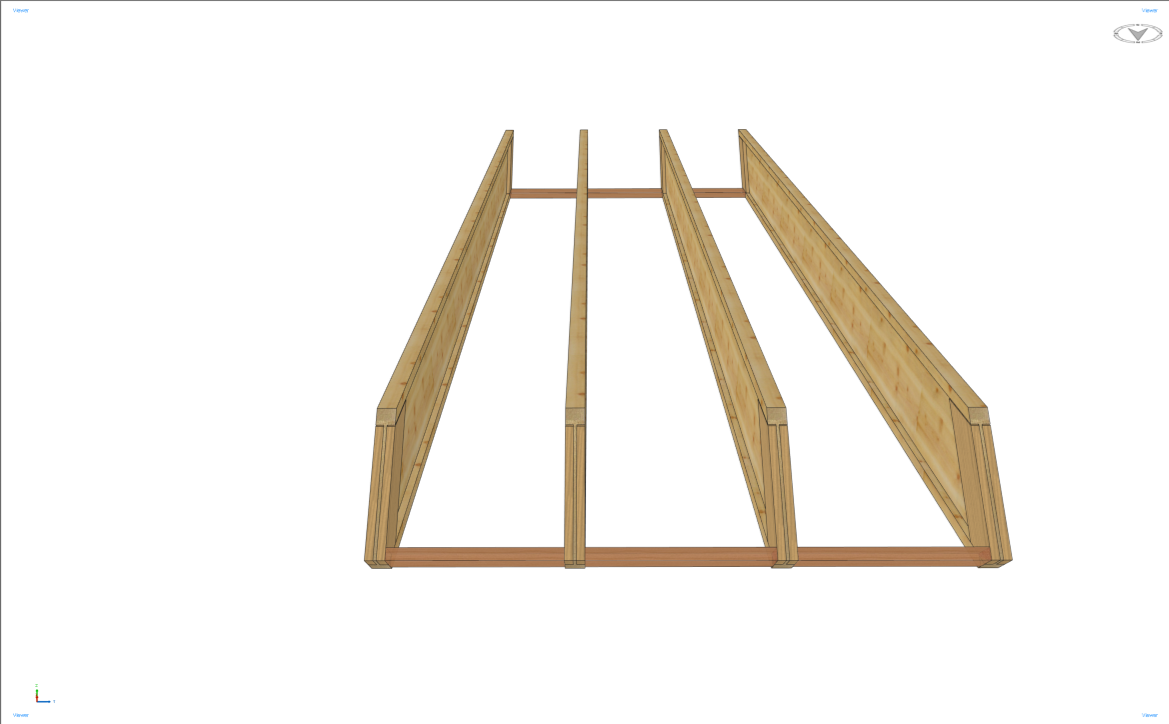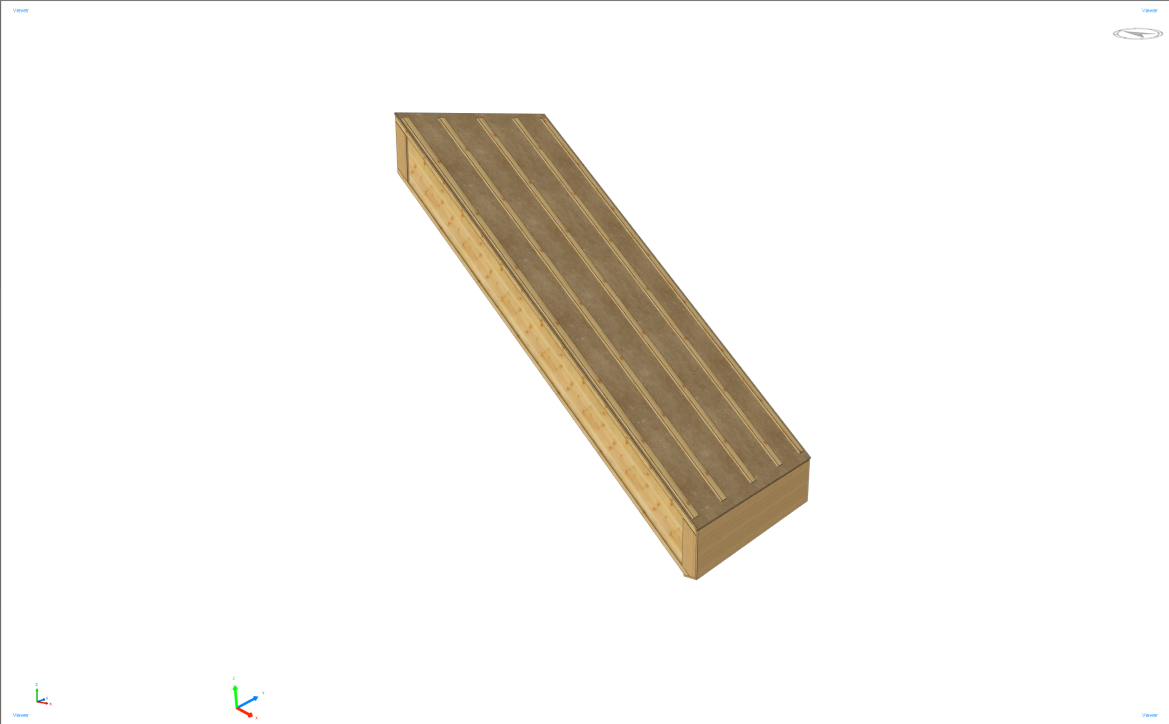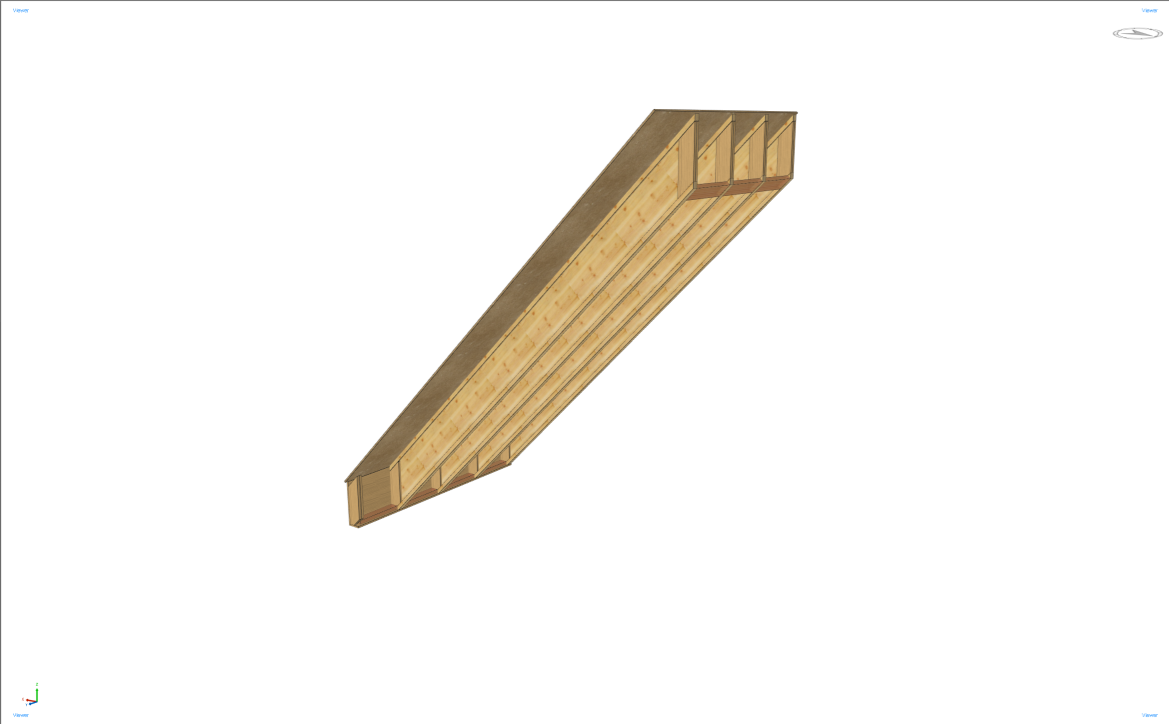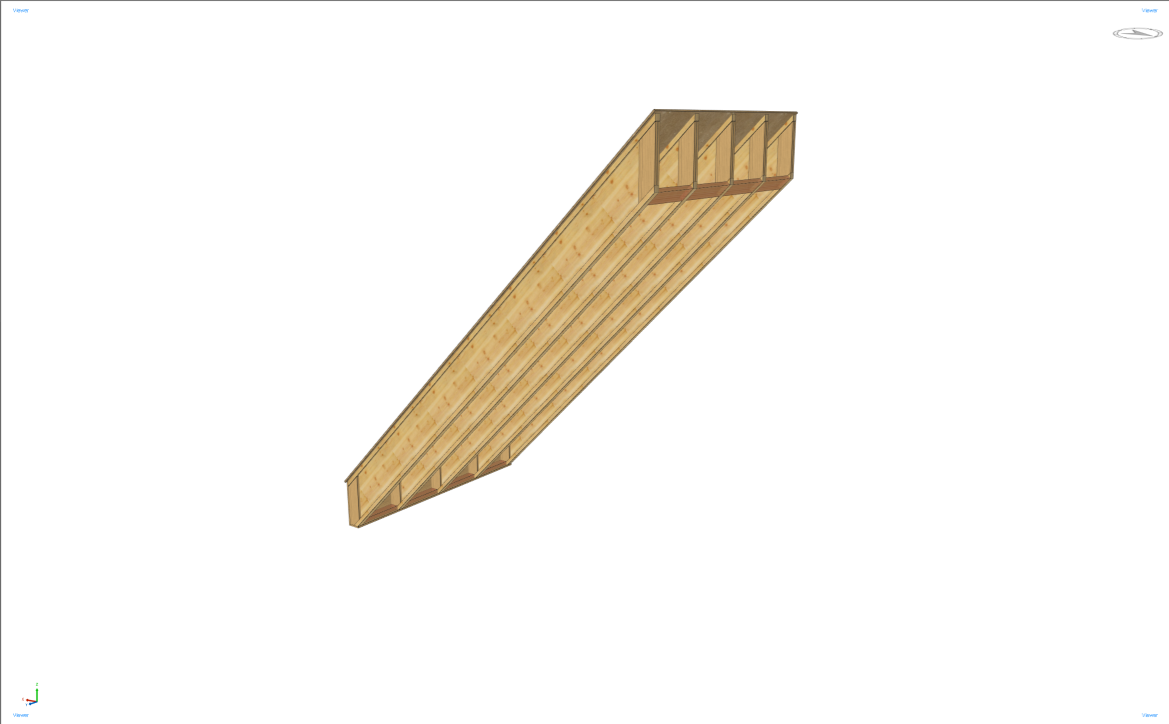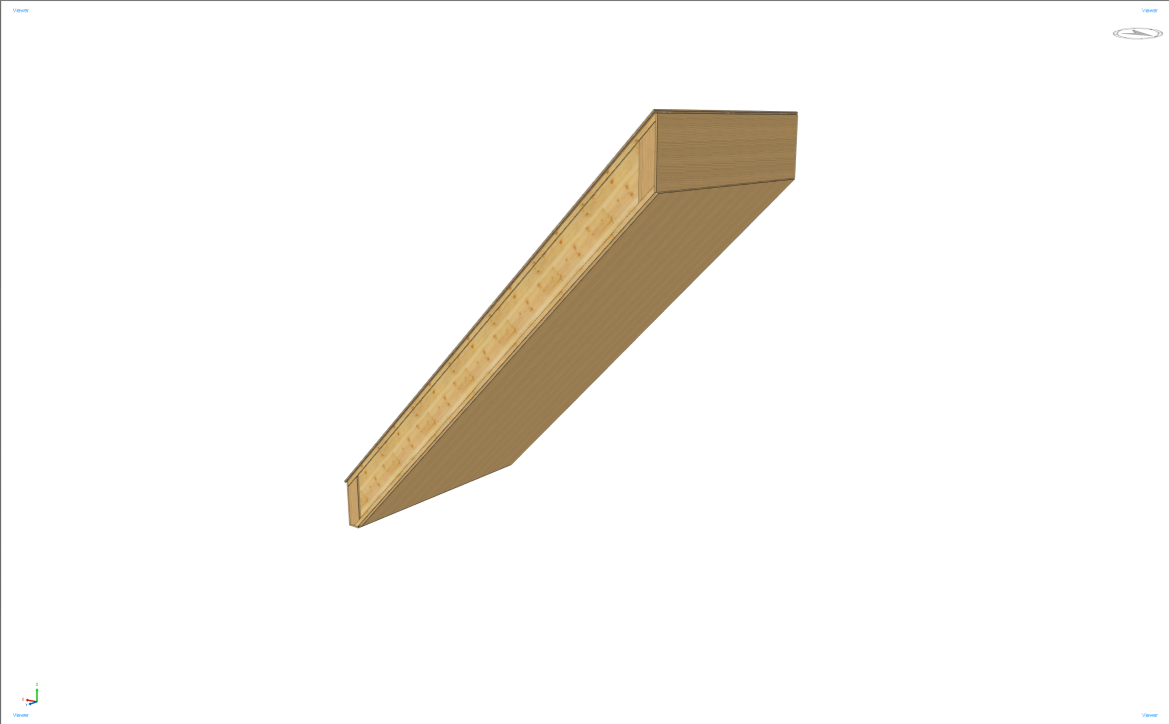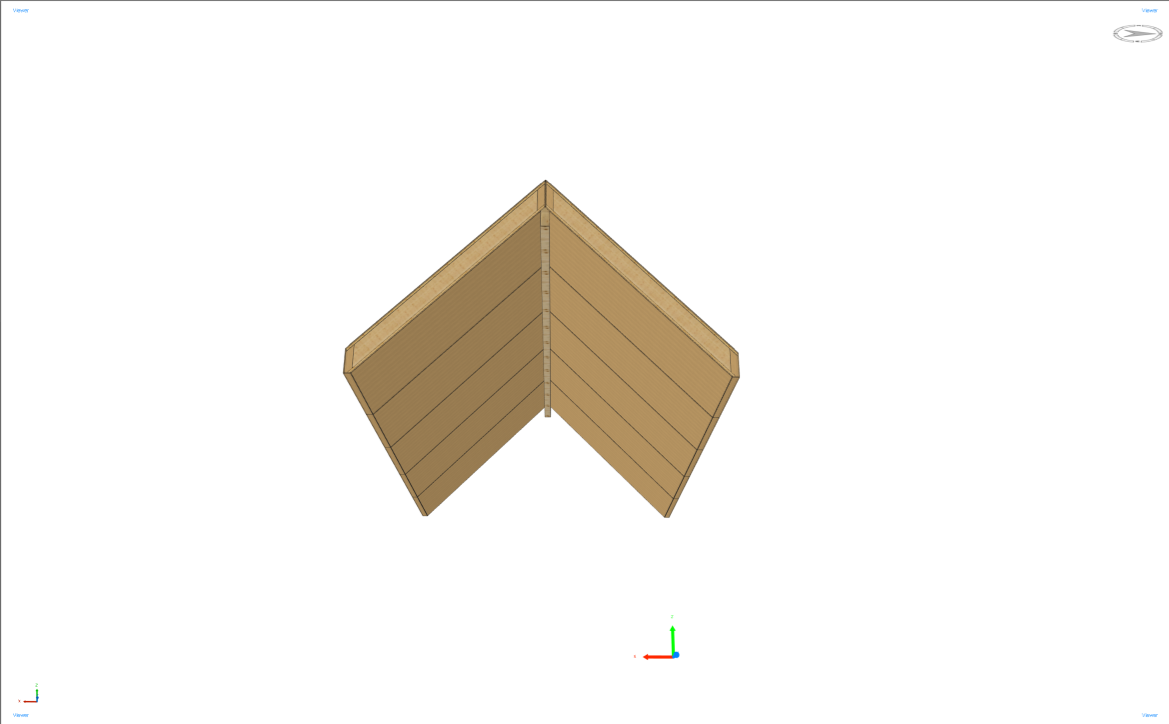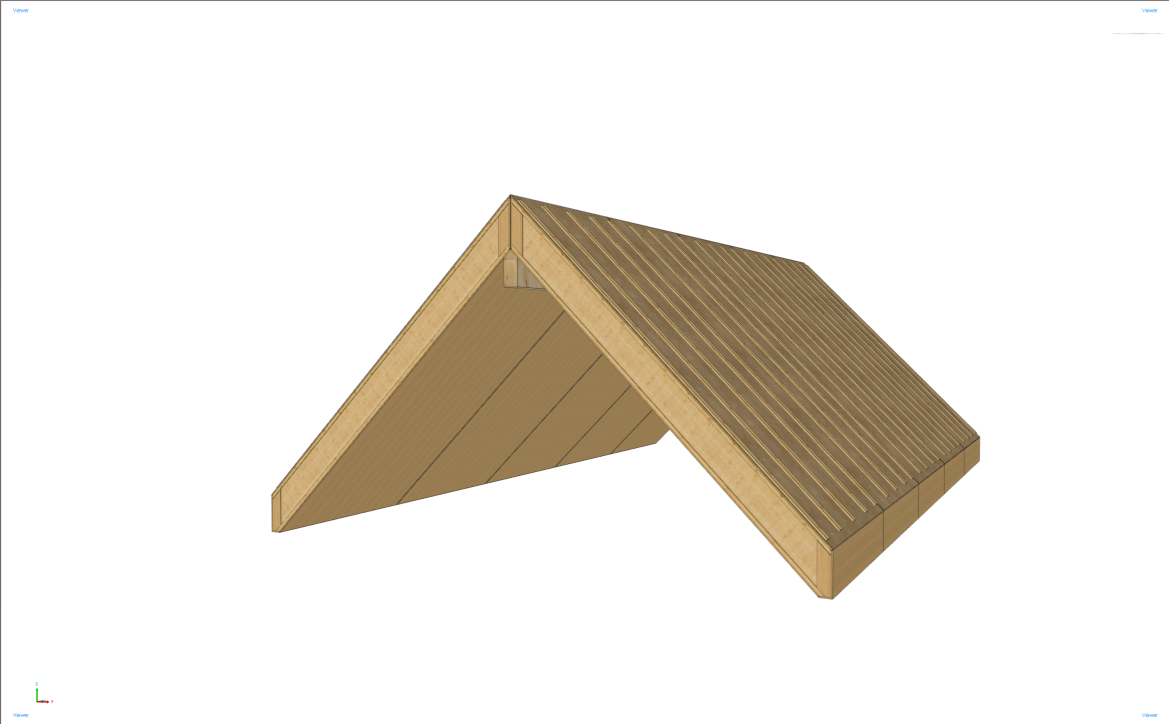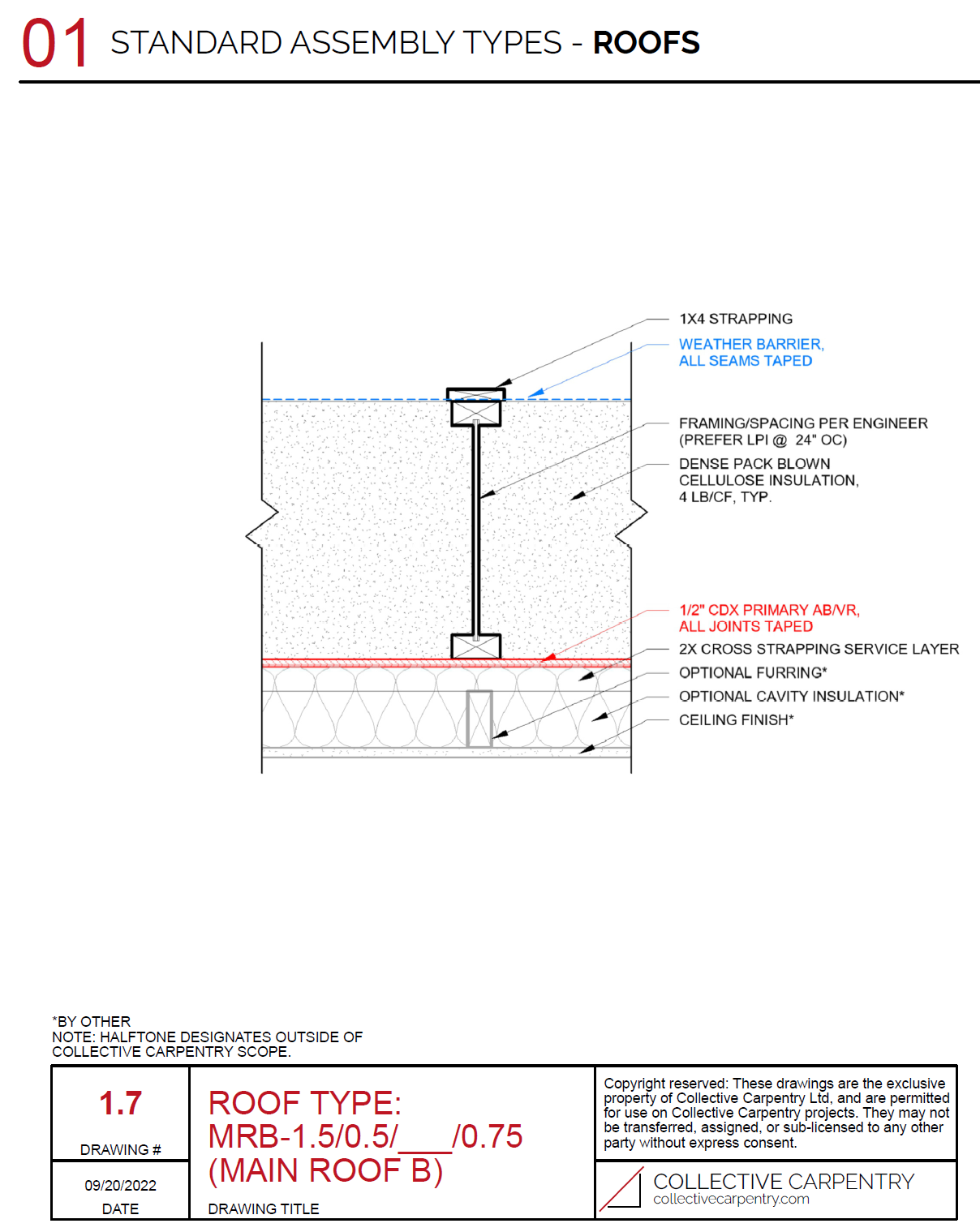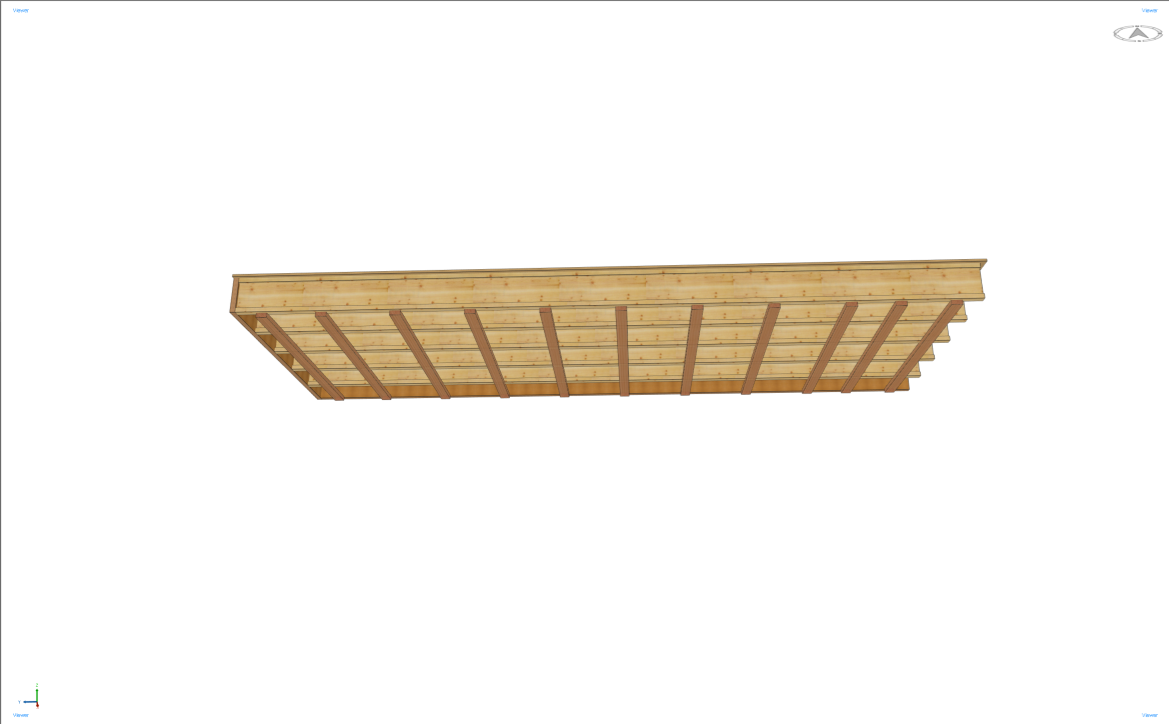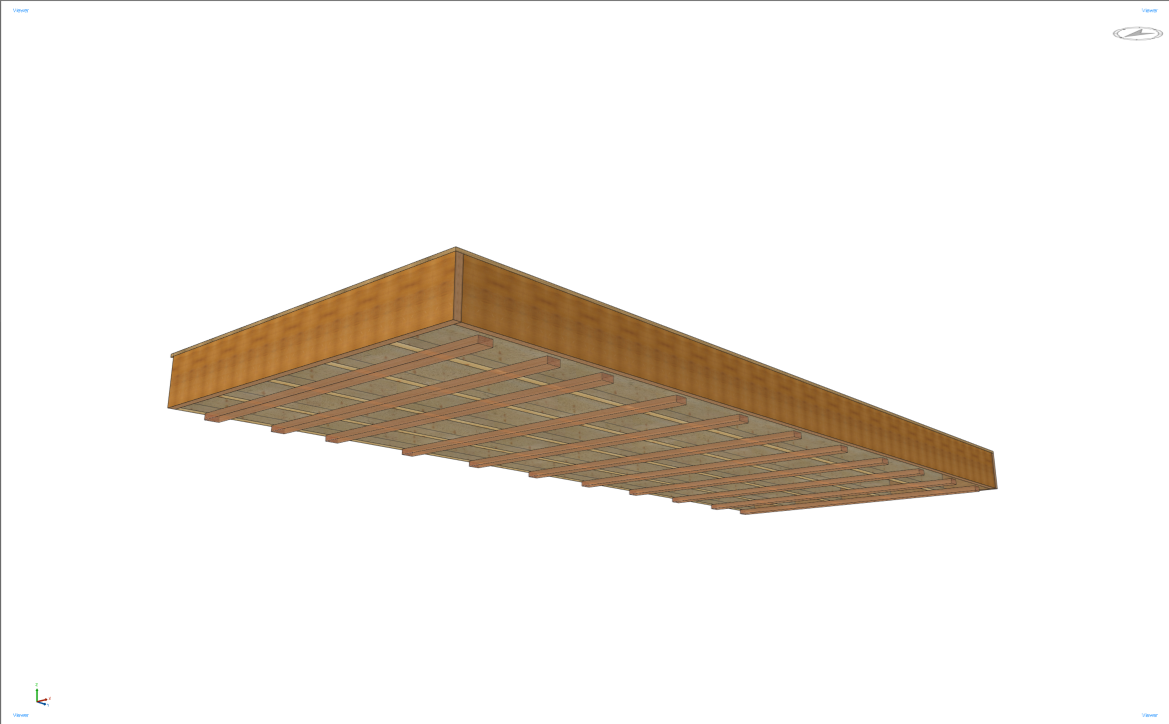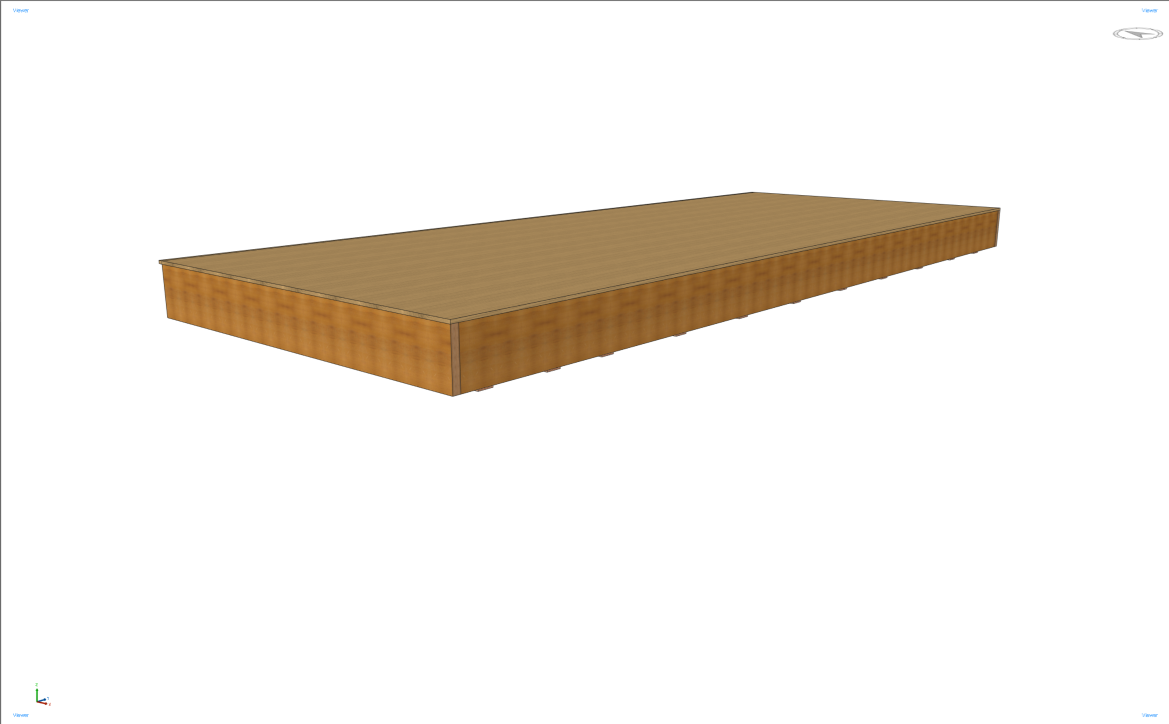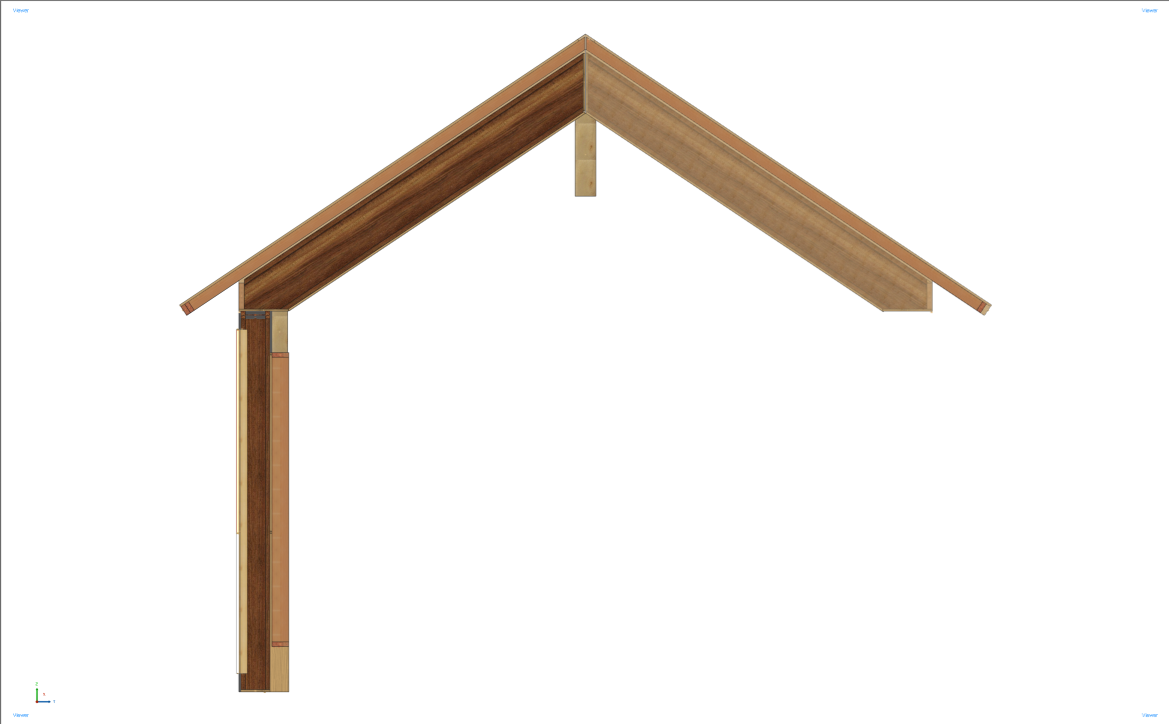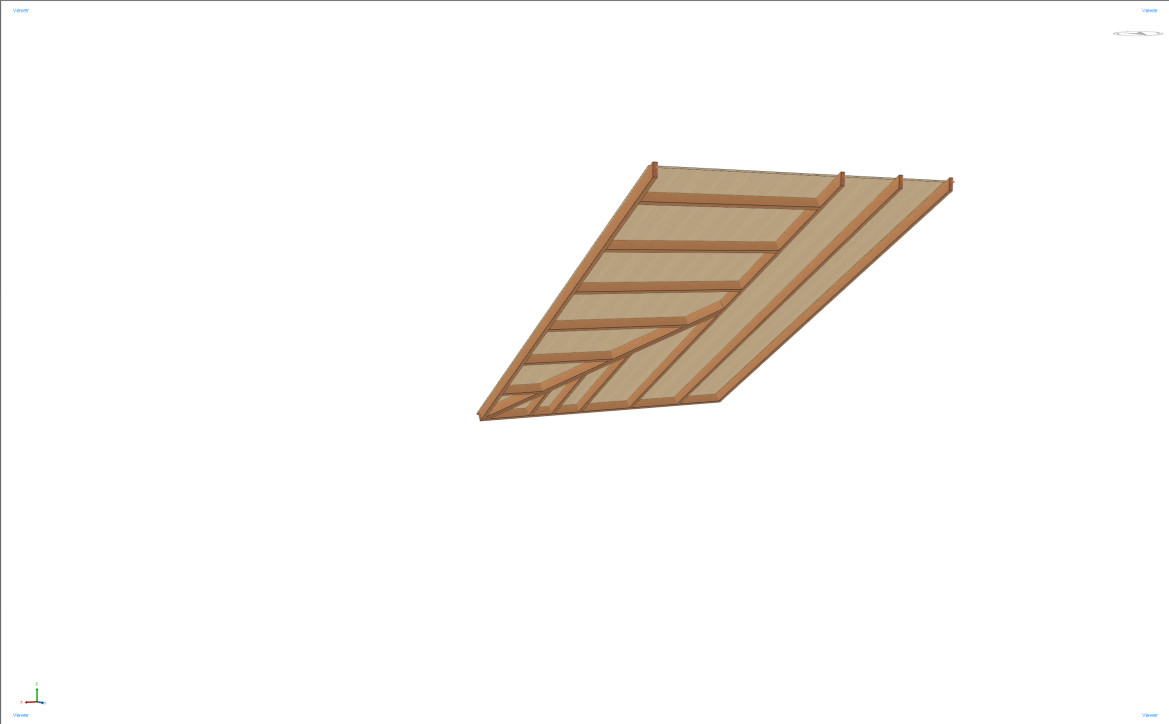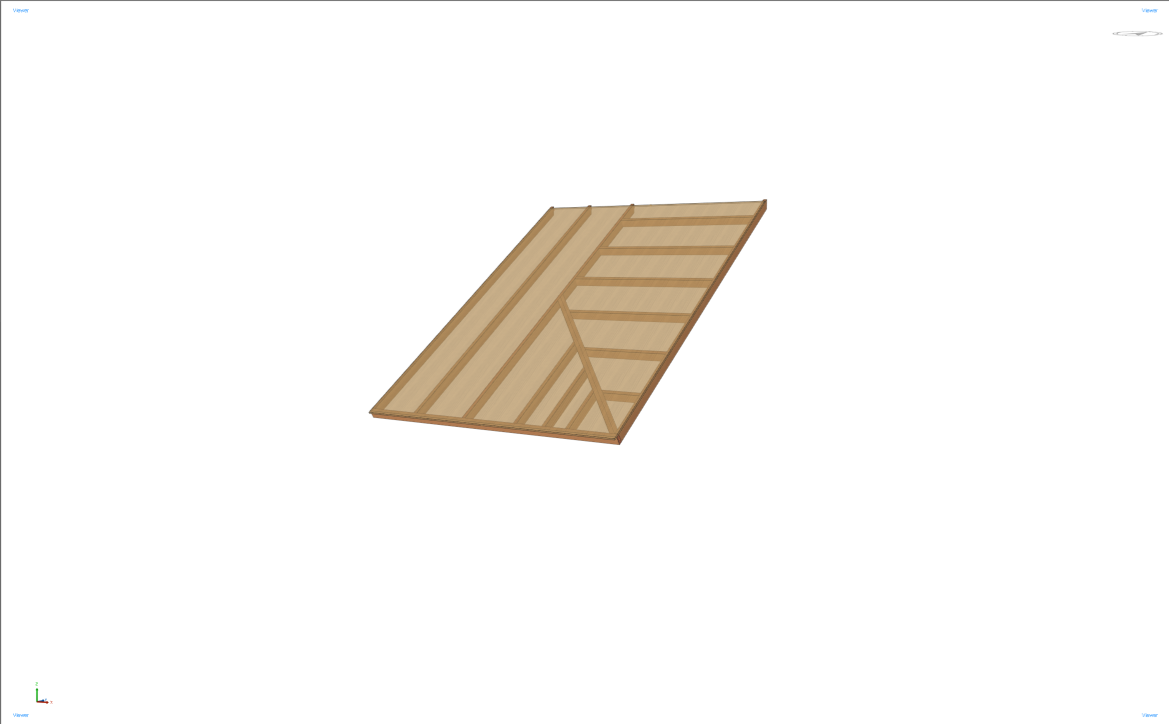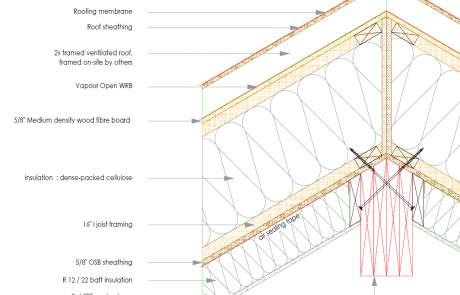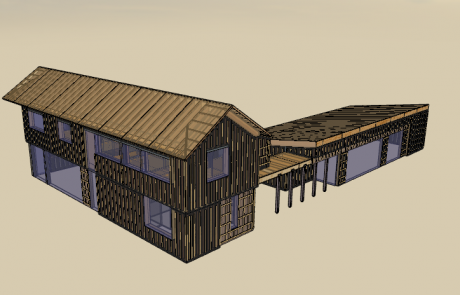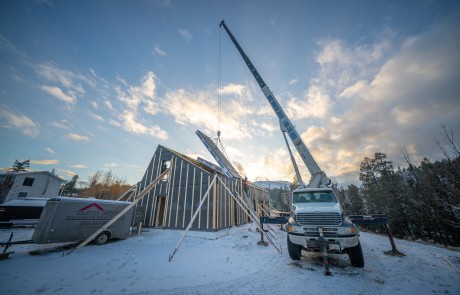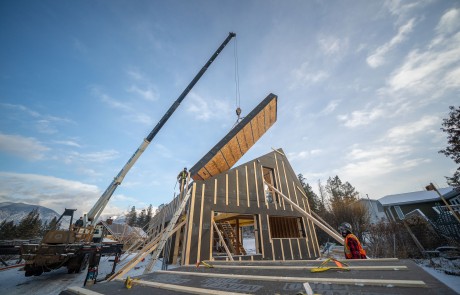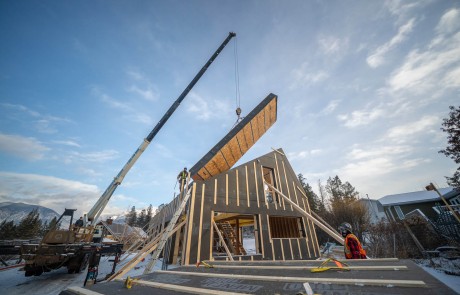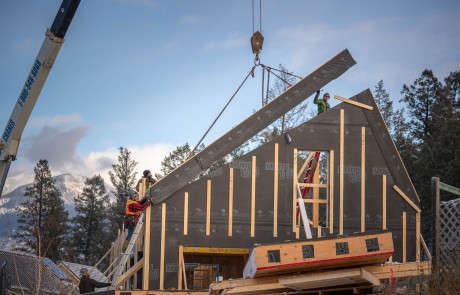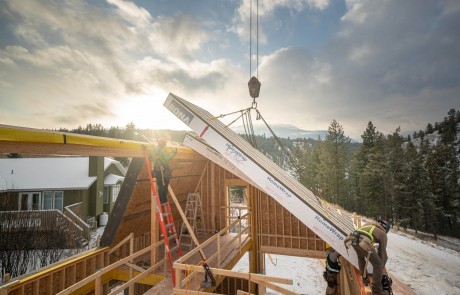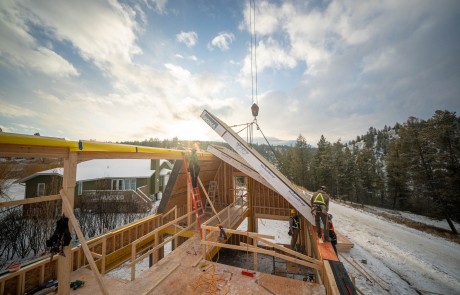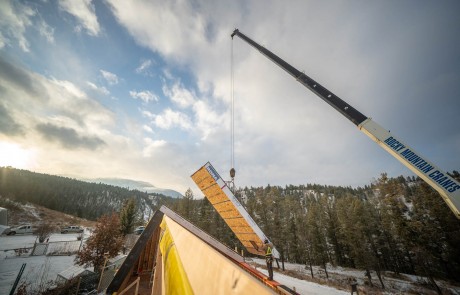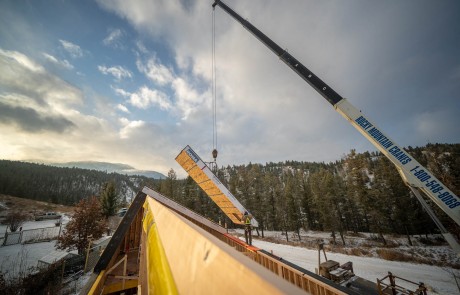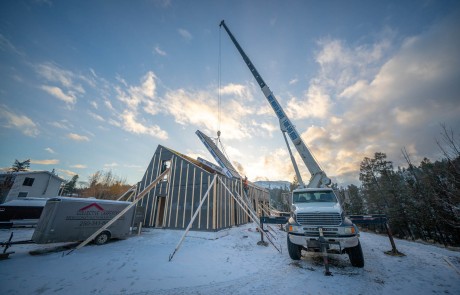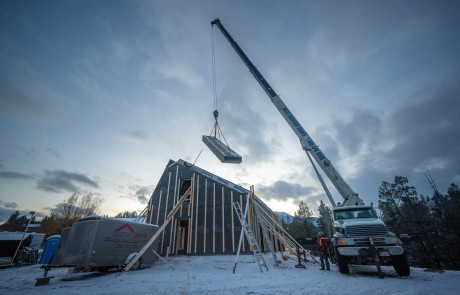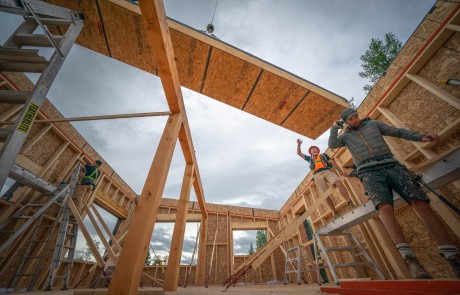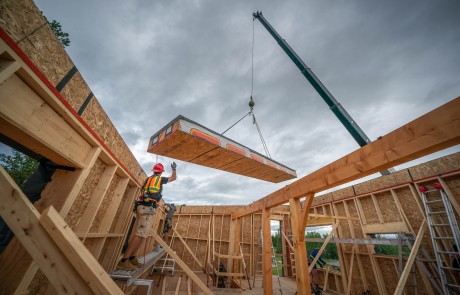Roof panels are ideal for projects looking for a complete building envelope package, and a chance to get out of the weather as quickly as possible.
Collective Carpentry roof panels are always designed with high performance building principles of energy efficiency, durability, health, comfort, and embodied carbon in mind. They typically far exceed requirements from local building regulations, and always take into account local climate factors, client desires for insulation performance, and optimization for the prefabrication process.
While we are well known for our flexibility in collaborating on the roof panel design, and in building any custom roof panel that meets our standards for the above high performance building principles, we have also found a singular approach to the most successful, cost-effective, and efficient roof panels we can build, defined below for a variety of roof design possibilities.
1. Vented pitched-roof panel
Our vented pitched-roof panels are named as such because they are designed for use in roof pitches of 3:12 or greater, and because a vented roof is a crucial high performance building element, regardless of the roof type.
We build two variations of the vented pitched roof panels – one with a service cavity and a smart vapour retarder on the bottom and plywood with a self-adhered membrane on top; the other with plywood on the bottom and a reinforced membrane with a strapping layer on top. These roof panels are typically composed of I-joists on 24” centers, LVL rims, densepack cellulose (recycled newspaper) filling the cavity, and are compatible with additional interior service cavities or strapping and/or roof overframing on top. These panels are typically supported by the structural wall on the eaves side and a large structural dropped glulam beam or a tall structural wall at the ridge. Stiffeners and blocking are also regularly incorporated into the engineering of these panels.
Variation 1 (SVR underside)) – Inboard to outboard:
- 1 ½” (2×4 on the flat in the shop, typically uninsulated) or 3 ½”/5 ½” (2×4/2×6 on edge, by others on-site, option to insulate on-site), R-6, R-14, or R-22
- Intello Plus reinforced smart vapour retarder, taped airtight (primary air and vapor control, and to contain cellulose insulation)
- 11 ⅞”, 14”, 16”, 18”, or 24” I-joist* structural layer filled with densepack cellulose (recycled newspaper) insulation, R-44 to R-89
- ⅝” plywood sheathing
- Pro Clima Solitex Adhero self-adhered airtight monolithic roof underlayment (secondary airtightness, weather protection)
- Typically combined with an overframed roof panel
Variation 2 – (Plywood underside) – Inboard to ouboard:
- Optional – add 3 ½”/5 ½” (2×4/2×6 on edge, by others on-site) service cavity framing and insulate on site, R-14, or R-22
- ⅝” plywood sheathing, taped airtight (primary air and vapor control, and to contain cellulose insulation)
- 11 ⅞”, 14”, 16”, 18”, or 24” I-joist* structural layer filled with densepack cellulose (recycled newspaper) insulation, R-44 to R-89
- Solitex Mento Plus reinforced airtight monolithic roof underlayment (secondary airtightness, weather protection)
- 3/4″ – 1 1/2″ vertical strapping (& optional ¾” to 1 ½” horizontal strapping)
Total R-value: R-44 to R-111 (depending on joist thickness and interior site-applied insulation used)
Typical finished roof R-value: R-80 (nominal)
*note: 18” and 24” I-joists generally require longer lead times and are disproportionately more costly
2. Unvented flat roof panel
Modern building science tells us that unfortunately, even if a ventilation space is provided above a flat roof panel and underneath the finished roof decking and roofing material, it tends not to ventilate very well, due to the lack of stack effect to move the air through the cavity. Additionally, most designers look to add additional insulation on top of a flat roof panel, in many cases an insulation that provides a slope for drainage. Therefore our flat roof panels provide maximum airtightness and moisture protection on the underside of the panel, by using a smart vapor retarder in place of an ⅝” airtight plywood layer. Strapping is often provided, both to contain the cellulose and to provide a cavity in which to install low-profile pot lights. Structural support for the flat roof is typically provided by the structural walls and other structural posts or beams where necessary. An 1 3/4″ LVL rim board of appropriate height is often used such that the flat roof panel can sit on top of the structural wall below, and the cellulose is contained.
Inboard to outboard:
- 1 ½” (2×4 on the flat in the shop, typically uninsulated) or 3 ½”/5 ½” (2×4/2×6 on edge, by others on-site, option to insulate on-site), R-6, R-14, or R-22
- Intello Plus reinforced smart vapour retarder, taped airtight (primary air and vapor control, and to contain cellulose insulation)
- 11 ⅞”, 14”, 16”, 18”, or 24” I-joist* structural layer filled with densepack cellulose (recycled newspaper) insulation, R-44 to R-89
- ⅝” plywood sheathing
- Pro Clima Solitex Adhero self-adhered airtight monolithic roof underlayment (secondary airtightness, weather protection)
Total R-value: R-44 to R-111 (depending on joist thickness and interior site-applied insulation)
Typical finished roof R-value: R-80 (nominal)
*note: 18” and 24” I-joists generally require longer lead times and are disproportionately more costly
3. Exo Roof Panels
Exo roof panels are commonly supplied as a means to provide a larger ventilation space or to carry a larger overhang out from the structure. These consist simply of dimensional lumber with a layer of ⅝” plywood, and fascia boards. While with our vented roof panels, the roofing installer typically must add a layer of plywood and/or a shingle underlayment or metal roof clip system, the exo roof panel provides this plywood layer ready for the roofer’s use.
While our roof panels are designed with skylights, roofing materials, interior services, and interior finishes in mind, these items are not included in Collective Carpentry roof panels and are installed on site by others. ¾” plywood skylight bucks and approved headers and additional structure for windows and doors are always installed in the shop, integrated into airtight layers, and included in CC roof packages.

